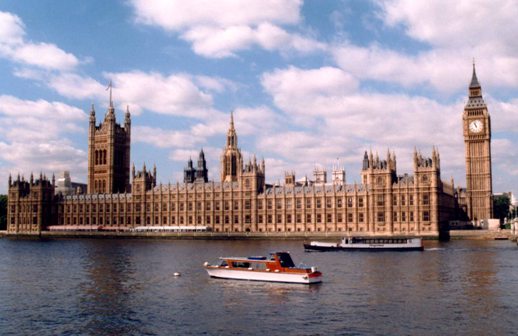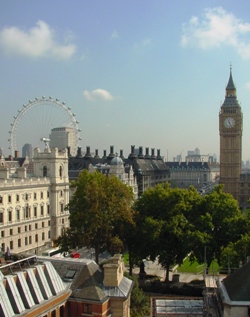 Adler deWind reports on a recent Society submission to the House of Commons Science & Technology Committee on public understanding of climate change.
Adler deWind reports on a recent Society submission to the House of Commons Science & Technology Committee on public understanding of climate change.
Questions, questions. These days it is not unusual for Parliamentary committees or Departments of State, when calling for evidence, to issue a set of more or less specific questions to which respondents are requested to reply. Answering them is not compulsory, of course; and if they are smart, learned societies will leave many of them unanswered because they lie outside the remit of those organisations. Individuals can afford to be less constrained about offering their opinions, and there is nothing to stop anyone making statements if they feel that they have something to say that is not addressed by the questions. However there are those who feel that this tendency to ask specific questions might be a thinly disguised effort by those in power to ‘tramrail’ discussion.
So, when the Society made its submission (Geoscientist June 2013 p.6)1 it chose not to answer all the questions raised by the Inquiry for the very reason that any answers would lie outwith the Society’s remit. However, that judgement is often a fine one. The question it chose to focus on, ‘How could public understanding of what is meant by climate change be improved? What are the main barriers to this?’ might not on the face of it look very geological. Yet for the Society it had clear Earth science implications because it went to the root of one major source of public mistrust (and denialist misinformation), namely climate modelling.
PUBLIC DEBATE
Anyone following the public debate on climate change will have noticed that the science most often quoted is dominated by atmospheric science, oceanography and predictive climate modelling - much reliance therefore being placed on ‘present day’ observations and data from what to geologists constitutes the recent past. This was evident in the Royal Society’s (September 2010) report ‘Climate Change: a summary of the science’, which referred to the historical past and to data from air bubbles trapped in ice cores up to 800,000 years old, but to no older data. As the Society pointed out to the Committee, ‘This is very recent in geological terms’ – a fact that might come as a surprise to many non-geologists.
Thus, the climate change narrative communicated to the public (by governments and others), shaped as it is by this rather limited science base, is vulnerable to attack. We saw the result when email records at the University of East Anglia’s Climatic Research Unit were made public.
The Society pointed out that the geological record contains abundant evidence of how the Earth’s climate has changed over hundreds of millions of years. This evidence includes direct and proxy data for ocean and atmosphere, including temperature, ocean acidity and oxygen levels, oceanic productivity, sea-level change and atmospheric composition, including CO2 concentrations. This broader evidence base, showing that the climate has undergone many fluctuations over this extended time, is entirely independent of both atmospheric modelling and data from the recent past, so making it invulnerable to attacks on those procedures.
PAST CLIMATE CHANGE

On several previous occasions, including 55, 120 and 183 million years ago, carbon has been rapidly injected into the atmosphere, triggering significant changes in climate. These included temperature increases of at least 5-6ºC globally (more near the poles) in the 55 Ma event, increased acidity and decreased oxygen levels in the oceans, increases in sea-level, and widespread extinctions. The submission pointed out that the source of this carbon was undoubtedly ‘fossil’, probably methane from collapsing hydrate deposits on the seabed; though CO2 from massive emissions of lava in plateau basalts is another possible scenario in this and other past carbon release events.
The important thing for politicians to grasp is that although these major environmental changes happened rapidly (not by Parliamentary standards, but over perhaps hundreds or a few thousands of years), the climate then took 100,000 or more years to recover. Emissions of CO2 from human activity since 1750 amount to perhaps a quarter to a third of the amount of carbon released during the 55 Ma event, and are happening at least 10 times faster. Moreover, irrespective of the success of global efforts to curb anthropogenic emissions, this release of carbon into our atmosphere will continue for several decades at least.
The Society highlighted recent research into ice cores containing bubbles of trapped air, which date back as far as 800,000 years, updating the evidence cited in the Royal Society’s 2010 report. As of early 2013, this research debunks the theory that the rise in global temperatures during the ice age preceded the increase of atmospheric CO2 levels. Refinements to the technique used to date air bubbles in the ice cores have revealed that, rather than being sequential, these increases were simultaneous – CO2 levels in the air increased whenever temperatures rose, though over this period rates of increase of CO2 were 10 to 100 times slower than in the past 100 years.
COUPLED
It is therefore clear that on no matter what scale - millions of years, or tens of thousands of years - CO2 and temperature have always changed together. Indeed, basic physics suggests that there is good reason to think that the two are causally linked. The Society pointed out that these various pieces of geological data allow us to calculate the sensitivity of the atmosphere to a doubling of CO2, independently of climate models. The fact that climate sensitivity, as calculated from observed geological data, matches climate models quite well, lends the latter great credibility.
The Society published a public statement about the climate change evidence contained in the deep geological record in November 20102, prepared by a working group with a wide variety of relevant expertise. This submission urged that paying greater attention to this (independent) disciplinary approach to climate change science can deepen public understanding and add resilience to efforts to build public trust and engage the populace in efforts to reduce carbon emissions.
EXPERIMENT
It is often said, for example, that in continuing to emit carbon at current levels, we are running an ‘unprecedented’ or ‘uncontrolled’ experiment on the Earth system. This seems like an attempt to invoke a ‘precautionary principle’ approach; but while many may find it persuasive, many more do not. It might be more fruitful instead to highlight the natural analogues for this so-called ‘experiment’, citing events that have actually occurred in the geological past, such as the 55 Ma event (the Paleocene-Eocene Thermal Maximum, or ‘PETM’). The key question then becomes – are we now recreating the conditions that led to the PETM? The answer to that is surely clear.
The Society also said it believed there was scope to improve engagement between different scientific ‘tribes’. On the one hand, we have climate modellers and atmospheric and ocean scientists with knowledge of evidence from the recent past. On the other stand geoscientists whose expertise relates to the deep geological record. The design and parameters of the predictive models used in forecasting, based as they are largely on current observations and data from the recent past, need to draw more heavily on research into rapid climate change events in the deeper geological past. Such collaboration would test and improve the performance of predictive models and should be encouraged.
Finally, in a plea for more (or no reduction in) investment in relevant research, the Society concluded by pointing out that better understanding of past climate change will result from greater investment in sampling of the geological record. This is, mostly, hidden - either in ice cores, or in deep ocean sediments requiring deep ocean drilling or piston coring for collection.
References
- www.geolsoc.org.uk/climaterecord